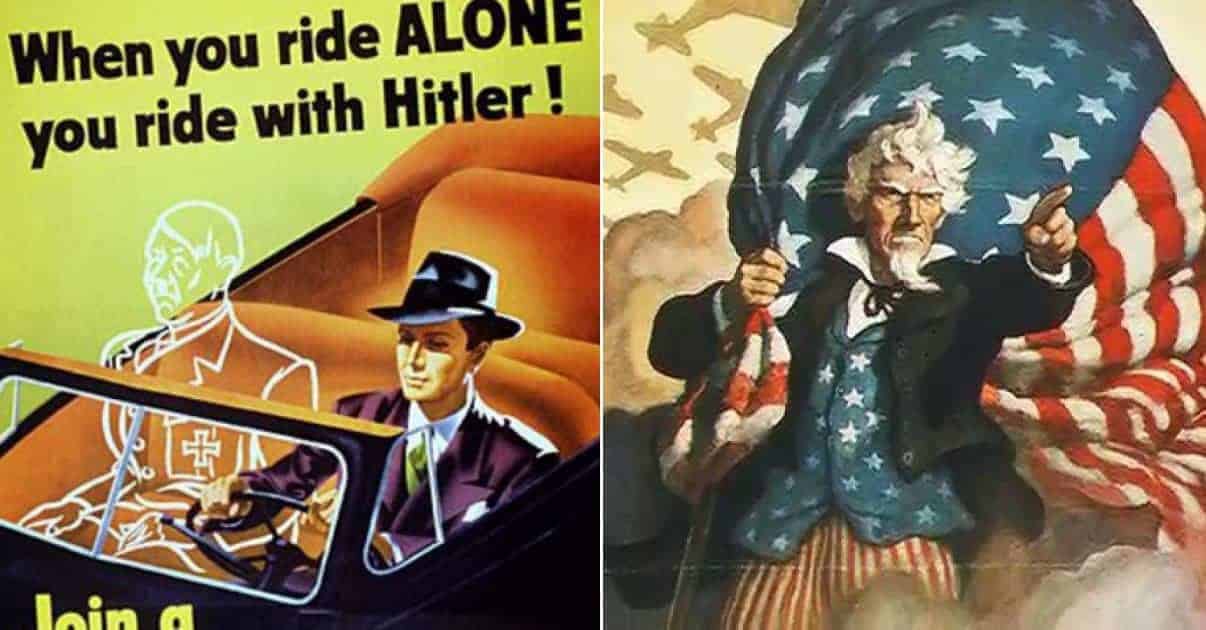Propaganda is the deliberate spreading of ideas or information for the purpose of shaping public opinion. Often it is disguised as news, as when William Randolph Hearst used blatantly false stories of Spanish atrocities in Cuba to help lead the United States into war with Spain. Other times it has been used to help generate the support of the public for government actions. During the Second World War government approved propaganda was relied upon to remind the public that the United States was engaged in a “good” war, and the troops serving at the front were merely the tip of the spear. A victory over the brutal Germans and the equally inhumane Japanese required the full support and sacrifice from all Americans.
American motion pictures depicting the war often presented the troops, or sailors, or airmen, in terms which revealed the diversity of the nation. A typical squad would include a Dodger loving horse player from Brooklyn, an Iowa (or Kansas, or Nebraska, or Ohio) farm boy, innocent and true of heart, a bookworm of superior intelligence, and so on, a visual reminder that all Americans were in this together. Other reminders of the unity required for victory came in posters at shops and workplaces, advertising in magazines and newspapers, radio broadcasts and more, all with the aim of keeping up spirits and war production.

Here are nine examples of propaganda which were commonplace during the Second World War.

Loose Lips Might Sink Ships
Even before the United States entered World War II as a combatant, ships laden with military supplies and foodstuffs cleared American ports destined for the United Kingdom. Lend Lease ensured that in return for the use of British bases in Canada and the Caribbean American manufacturing and agriculture was enlisted in support of the British Empire (and after June 1941 the Soviet Union). This support of the opponents of Germany and Italy helped place American industry on a war footing many months before the United States joined the belligerents in Europe.
All goods leaving the United States were sent to Europe by ships which were forced to run the gauntlet of German U-boats and surface raiders. In the early days of the Battle of the Atlantic U-Boats were often forced to remain on station near the known sea lanes used by cargo ships. Limited operational time at sea meant that the Germans often had to leave patrol areas having failed to sight any ships.
German spy activities in and around America’s east coast ports helped to place U-boats in the right areas when the Germans were informed of the time of a ship’s embarkation from the ports, whether or not the ship was to be included in convoys escorted by vessels of the Royal Navy or the Canadian Navy.

Sailors discussing their upcoming journey were a weak spot in the system of security necessary to protect the shipments. Merely mentioning a time or day of departure in a waterfront bar or other place of resort to the sailors (such as a Union Hall) provided the Germans with the knowledge necessary to encounter the ships at sea.
Longshoremen too were often aware of the time of departure for a given vessel or vessels. Posters which warned the maritime employees against discussing the time of sailing, expected arrival in the UK or other ports, lading, a ship’s speed, and any other information which may aid the enemy were placed wherever sailors, and agents of the enemy, were known to gather, along with graphic depictions of the hazards of unguarded discussions of operations.

